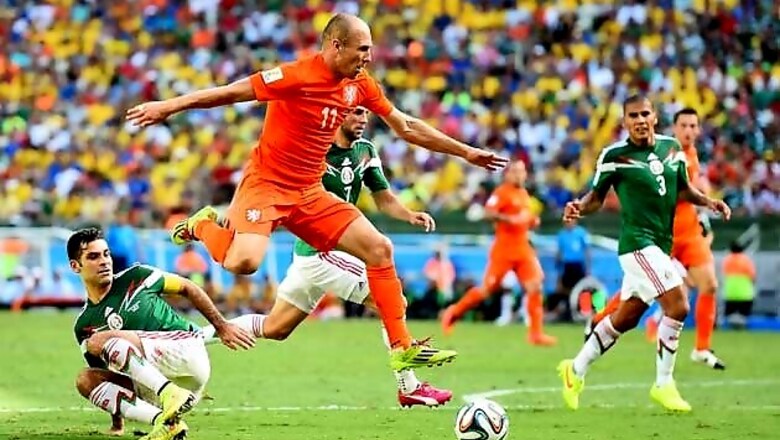
views
Mexico defender Rafa Marquez stuck his foot out and Netherlands winger Arjen Robben went down for an injury-time penalty that took his team into the World Cup quarter-finals with a 2-1 win.
Did Robben dive or was he fouled by Marquez?
Or - to ask the fashionable question that evades the issue of whether it was actually a foul - was there 'contact'?
If there was contact, was it the result of the Mexican's movement or Robben's ability to connect with the defender?
Those are the judgments Portuguese referee Pedro Proenca had to make in the final seconds of an intense game played in baking heat in Fortaleza with a last-eight place on the line.
Who would be a referee?
Of course, the partisan took predictable positions on the incident but it was hard to find consensus among the neutrals.
It does not help that Robben has dived frequently in the past and had been clearly looking for a penalty in this game.
But then the Dutch could argue, with some justification, that he should have had a spot kick earlier in the game and also highlight how, not long before the penalty, he had skipped over a lunging Marquez as he tried, in vain, to score.
Of course, it could be pointed out that what happened previously should have no bearing whatsoever on Proenca's evaluation of the incident.
RISK 'CONTACT'
Critics would say Marquez was reckless or naive to stick out his foot with Robben moving away from goal, leaving Klaas-Jan Huntelaar to score the spot kick and put the Dutch through.
But the question now being asked is: Has the game reached the stage where a defender is not allowed to even attempt a tackle in the penalty area because it may risk 'contact' that would justify a penalty kick?
The answer to the last question is yes, a defender, in modern football, cannot risk contact with an opponent in the penalty area because if it results in a fall, even an embellished one, the referee will probably give a penalty.
In the NBA it is called 'drawing the foul' and is universally accepted, but modern football has not found the vocabulary for it nor the acceptance of the 'dive after contact'.
The crucial difference is that in basketball the punishment for such fouls is a couple of free-throws with two points available in a game with a total of about 200 points scored.
In football, 'drawing the foul' can - and does - decide the outcome.
Video technology is often presented as the solution for most refereeing problems but it offers little help in these cases.
When you listen to the modern professional player talk about such incidents they will accept that a player has 'made the most of it' by falling but if there was some sort of contact an exaggerated collapse is now viewed as justified.
If the game is not happy with that state of affairs then it needs to do some hard thinking about how it might change the rules or their interpretation in order to deal with the problem.
The pendulum seems to have shifted too far in favour of the attacker in these situations and, while there is no obvious quick-fix solution, rewarding embellishment seems an unsatisfactory status quo.



















Comments
0 comment